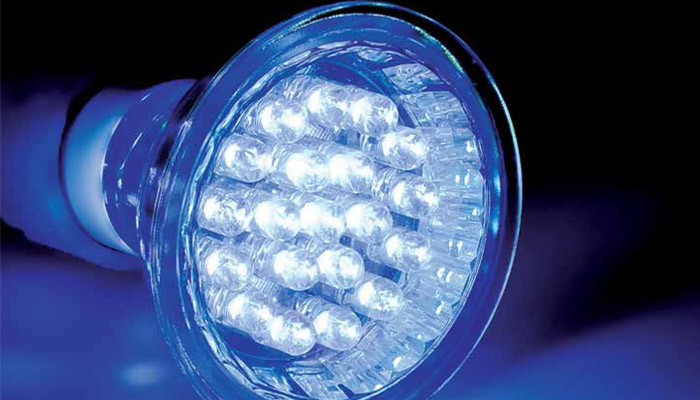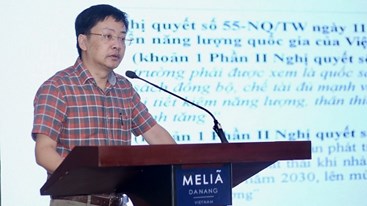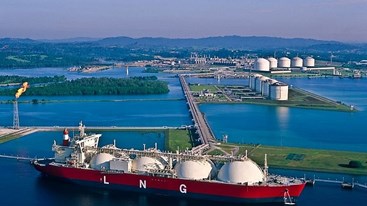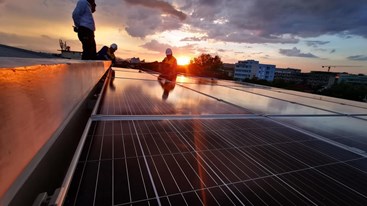Thursday, 02/05/2024 | 14:26 GMT+7
New Delhi, Feb 21 (G’nY News Service): Ruling for over two centuries the Edisonian invention of incandescence has been completely overtaken by a new creed of light bulbs – succeeding each other in quick progression from compact fluorescent lights (CFLs) to light-emitting diode (LED).
LEDs use a semiconductor as its light source and are currently one of the most efficient lighting systems. LED bulbs given the zero mercury content, good quality of light and less energy consumption from its predecessor seem to be a viable replacement of CFLs. The only drawback however is its pricing, but given the fact that it can last almost 50 times longer than ordinary bulbs, and 8-10 times that of CFL, it seems to be an optimal choice for users.

Rajesh Uttamchandani, Director of SSK Infotech talking to G’nY about the advantage of LED over CFL said “Syska LED gives a guarantee of 70 per cent power saving and two years warranty instead of 6 months against CFLs”. The growing importance of LED technology is palpable from the research budget allocated to it world over. In fact the 2014 Nobel Prize for physics was awarded jointly to Isamu Akasaki, Hiroshi Amano and Shuji Nakamura for the invention of efficient blue light emitting diodes which have enabled bright and energy saving white light sources.
The world’s growing demand of cleaner, safer, greener energy cannot be achieved if a developing country like India does not pay a heed to it. President Obama when he visited India in January, said “perhaps no country could potentially be more affected by the impacts of climate change, and no country is going to be more important in moving forward a strong agreement than India”. Ahead of Obama’s visit Narender Modi on 5th of January 2015 launched national programmes for LED street lighting and home lighting. While replacing an incandescent bulb with an LED he opined that it was much more economical to conserve power than to produce power.
The national programme, mandated under the Ministry of Power is to provide “LED bulbs to all domestic consumers at an initial payment of Rs. 10 each and recovery of Rs. 10 each for 12 months from their electricity bill”. The total cost of the LED would thus stand at Rs 130, which is much lower that the current open market retail price. The estimated annual savings for households in Delhi per LED bulb has been calculated to be Rs. 162 per bulb. However, it would take crores of people to conserve energy by using LED. It would seem that replacing the bulbs of the South Block offices in Delhi and saving 7000 units of energy every month marks a good beginning to the ‘prakash path’. But, seeing the many ‘pilot’ renewable initiatives lying defunct all over that nation, one can only hope that this initiative proves to be a success in energy conservation nation-wide.
By Anh Tuan


.png?w=367&h=206&mode=crop)
.jpg?w=367&h=206&mode=crop)




.jpg?w=367&h=206&mode=crop) Energy efficiency and conservation usage is an important aspect of the national energy development strategy
05/03/2024
Energy efficiency and conservation usage is an important aspect of the national energy development strategy
05/03/2024
 Challenges and Opportunities to promote energy efficiency market in Vietnam
Challenges and Opportunities to promote energy efficiency market in Vietnam
 The Ministry of Industry and Trade requests government agencies to coordinate in organizing Earth Hour 2024
The Ministry of Industry and Trade requests government agencies to coordinate in organizing Earth Hour 2024
 Consultation on Energy Efficiency Boiler Catalogue and Wood Drying Guideline
Consultation on Energy Efficiency Boiler Catalogue and Wood Drying Guideline
 Son Ha Co., Ltd, applies energy efficiency and conservation measures
Son Ha Co., Ltd, applies energy efficiency and conservation measures
.png?w=367&h=206&mode=crop) Request for expression of interest - C2.1.13: Capacity Building on energy efficiency policies development
Request for expression of interest - C2.1.13: Capacity Building on energy efficiency policies development
 Phuc Kien Co., Ltd., is effectively implementing energy-saving measures
Phuc Kien Co., Ltd., is effectively implementing energy-saving measures
 Request for expression of interest - C2.1.12: Independent monitoring of safeguards implementation
Request for expression of interest - C2.1.12: Independent monitoring of safeguards implementation